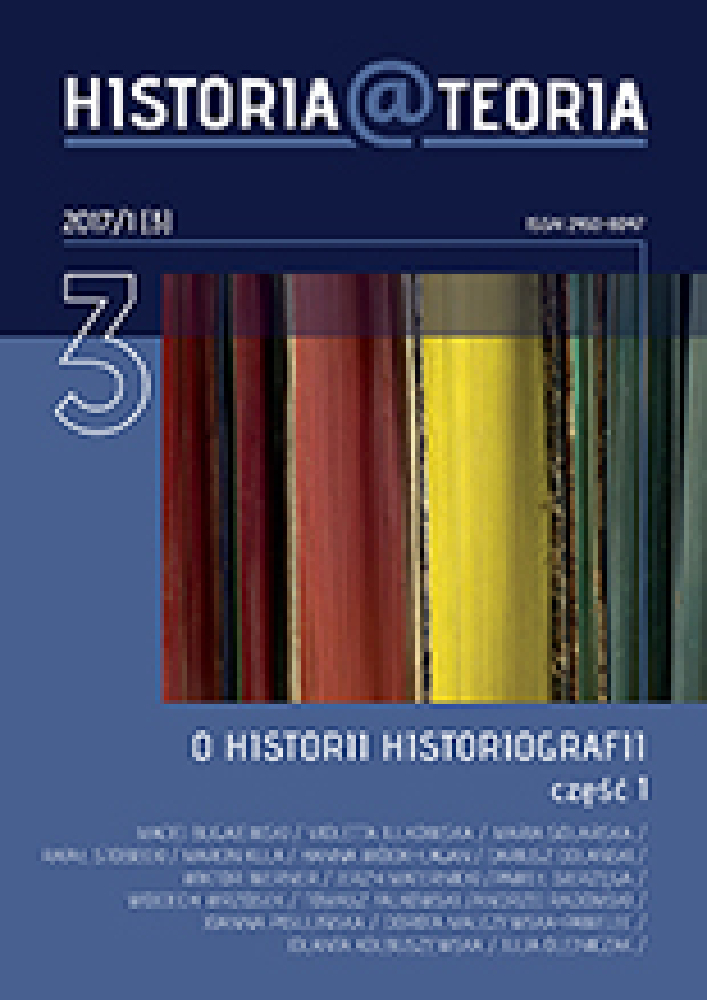Abstrakt
The article att empts to defi ne the history of historiography as a subdiscipline of history; it indicates the numerous competences of historians of historiography which are nessesary for undertaking an (auto)refl ection around the history of their discipline, for touching the theoretical and methodological aspects of historiography, and for the study of historicity of historiographical texts. Th e author asks about the current status of the history of historiography and new horizons of research. Regarding the fi eld of changes in the ways of comunication, she sees potential chances for increasing the interest of new recipients in the history of historiography. The author amplifi es the weft of reception, understood as a phenomenon that belongs to the comunication situation occuring between the author of transmission and his recipients. The author refers to the inspiration of the methodological conception of the school of reception aesthetics from Constance (W. Iser, R. Jauss) and the hermeneutics of H-G. Gadamer. Reception is a new concept for presenting the history of historiography as a fi eld of research on the historicity of historical works.
Bibliografia
.
Licencja
Autorzy
Autorzy tekstów przyjętych do publikacji w czasopiśmie Historia@Teoria są zobowiązani do wypełnienia, podpisania i odesłania na adres redakcji umowy o udzielenie nieodpłatnej licencji do utworów, z zobowiązaniem do udzielania sublicencji CC.
Zgodnie z umową, autorzy tekstów opublikowanych w czasopiśmie Historia@Teoria udzielają Uniwersytetowi im. Adama Mickiewicza w Poznaniu niewyłącznej i nieodpłatnej licencji oraz zezwalą na użycie sublicencji Creative Commons Attribution-NoDerivatives 4.0 International (CC BY-ND 4.0).
Autorzy zachowują prawa do dalszego, swobodnego rozporządzania utworem.
Użytkownicy
Zainteresowani użytkownicy internetu uprawnieni są do korzystania z utworów opublikowanych od 2015 roku w Historia@Teoria pod następującymi warunkami:
- uznanie autorstwa - obowiązek podania wraz z rozpowszechnionym utworem, informacji, o autorstwie, tytule, źródle (odnośniki do oryginalnego utworu, DOI) oraz samej licencji;
- bez tworzenia utworów zależnych - utwór musi być zachowany w oryginalnej postaci, nie można bez zgody twórcy rozpowszechniać np. tłumaczeń, opracowań.
Inne
Uniwersytet im. Adama Mickiewicza w Poznaniu zachowuje prawo do czasopisma jako całości (układ, forma graficzna, tytuł, projekt okładki, logo itp.).
